I began with this work based on a call from Grenadian curator, Susan Mains. The call was for work in reference to the social flux caused by technology in Grenada. As an artist that usually identifies as a representational painter, I began by wanting to explore the way that the digital realm has affected our perception. My first inclination was approaching glitch art. I enjoyed the idea of manually reproducing with painting the effect that we have all experienced through digital artefacts or glitches. I used a stencil I had made before that I manually moved to create a “glitch” effect.
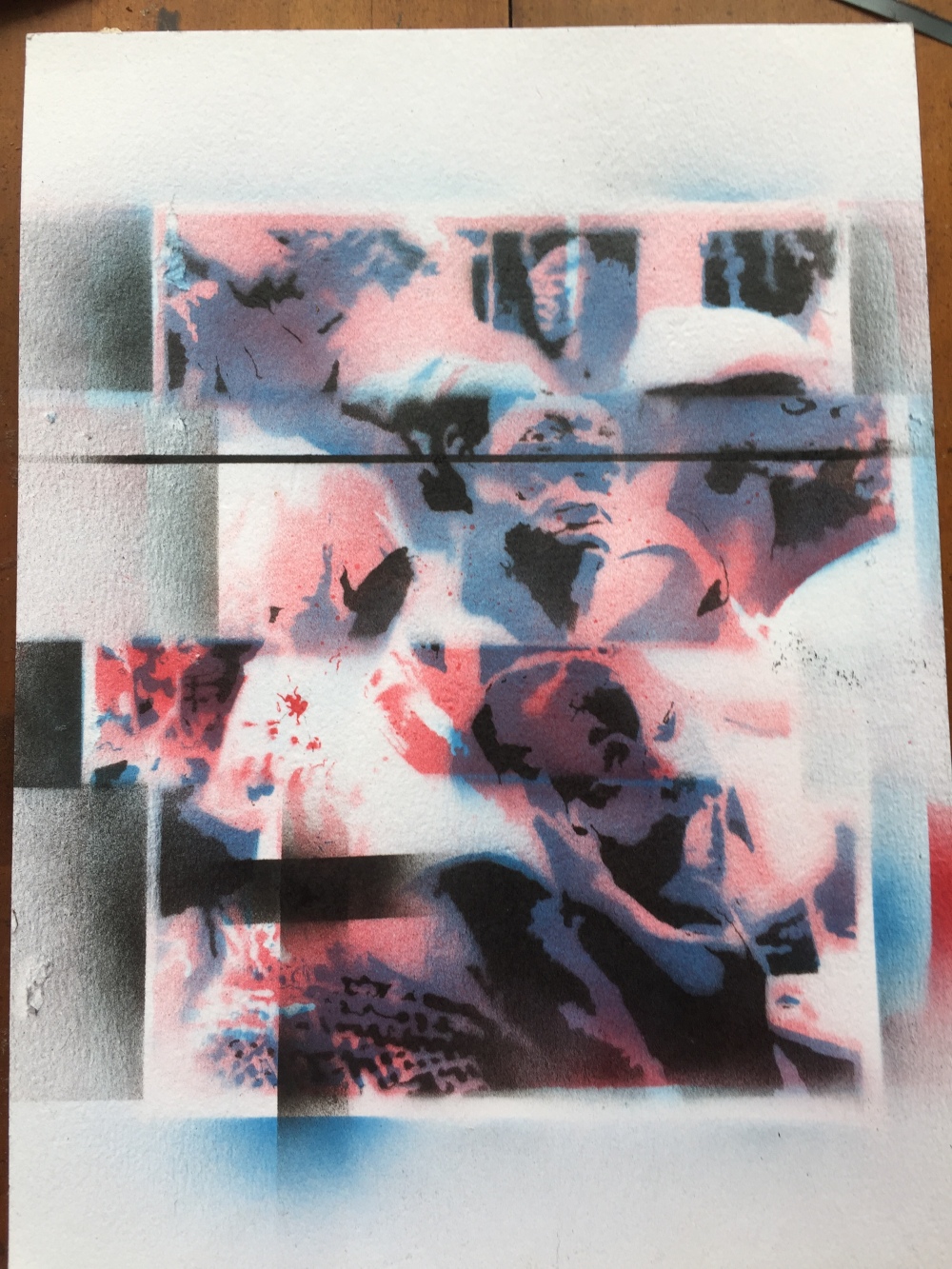
I wasn’t satisfied with this iteration – it wasn’t enough of what I wanted. Not only had paintings of digital glitches been sufficiently explored – but I also really value the element of using materials that are local to the environment you are working in. Then some detritus struck me. It was some banana fibre from stalks that had fallen in our yard.

Looking at some of the dry strips from the banana stalk – they seemed like landscapes to me. If not landscapes; beautiful hues of nature dried in meaningful patterns.

Through experimentation with the paper-like material I realized I wanted to sew it together into panels.

Side note: I had never sewn anything before this. In fact – I didn’t even realize at first that the sewing machine was in effect broken when I was using it. You can see some skips in the stitches of this first panel. I then taught myself how to fix a sewing machine so I could continue.
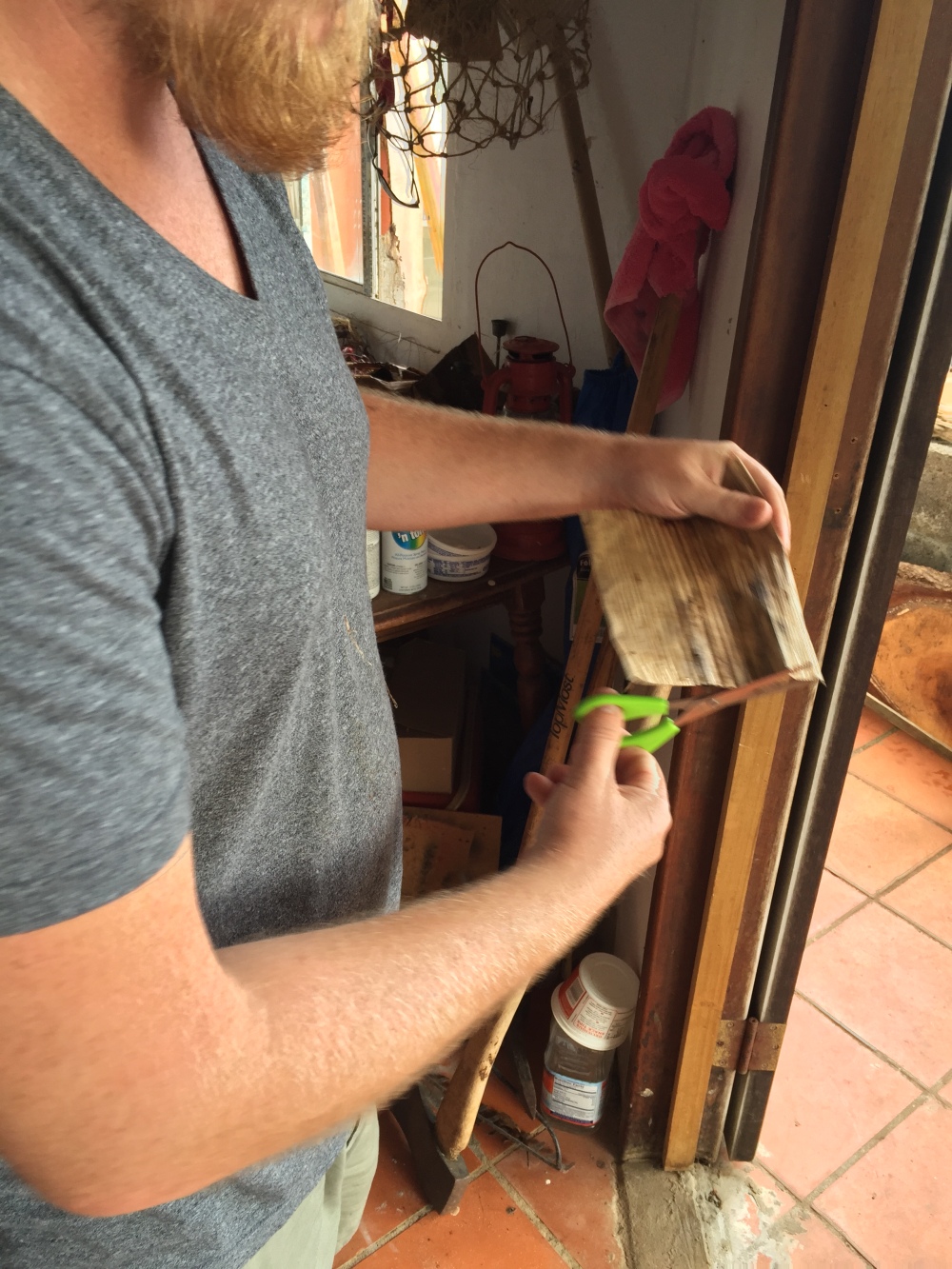
I finished 11 panels before the sewing machine broke again – this time needing a new part which will take several weeks to replace. During the interim I experimented with different methods of drying the banana fibre but also photographed it in its different states.
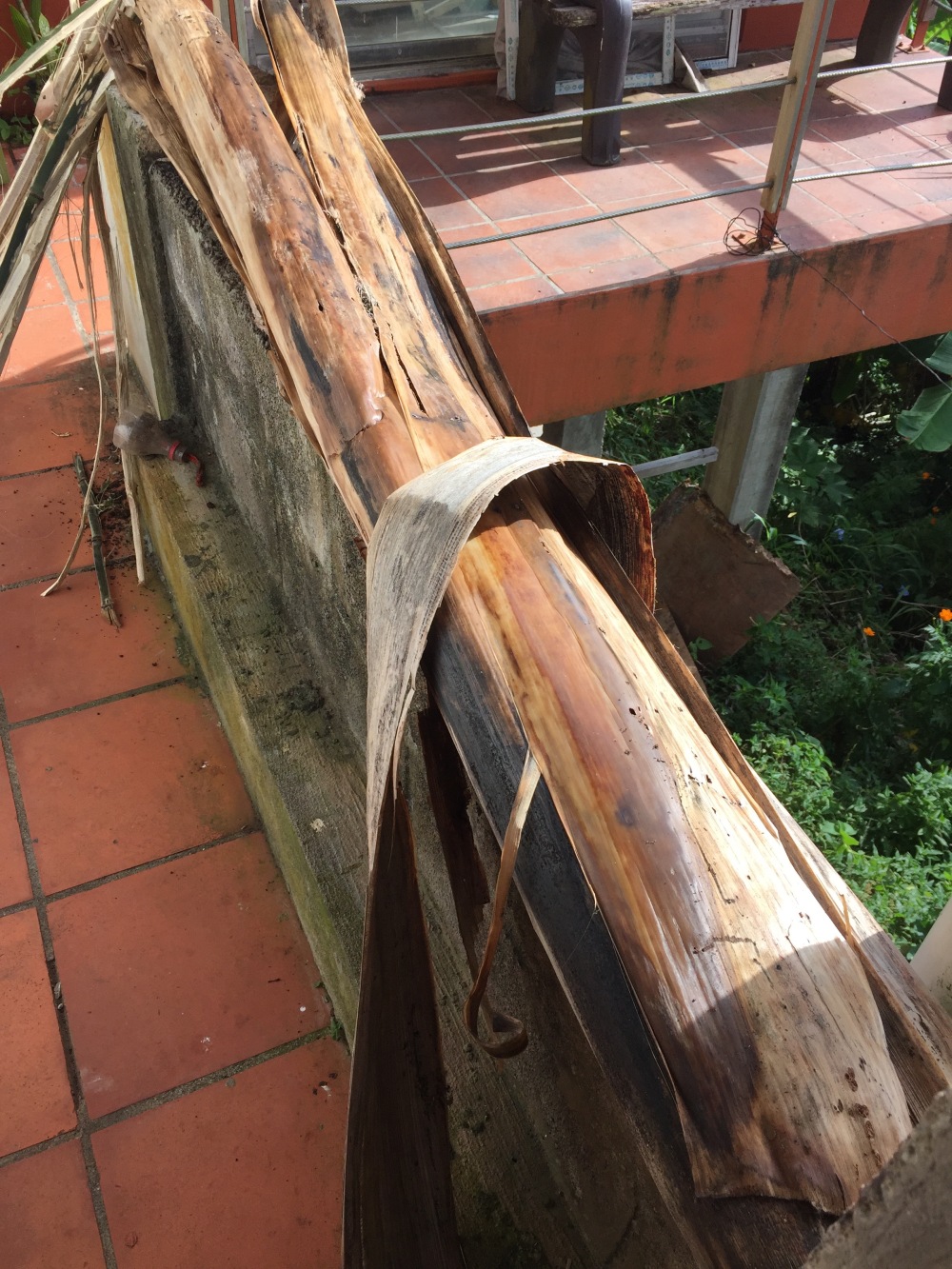
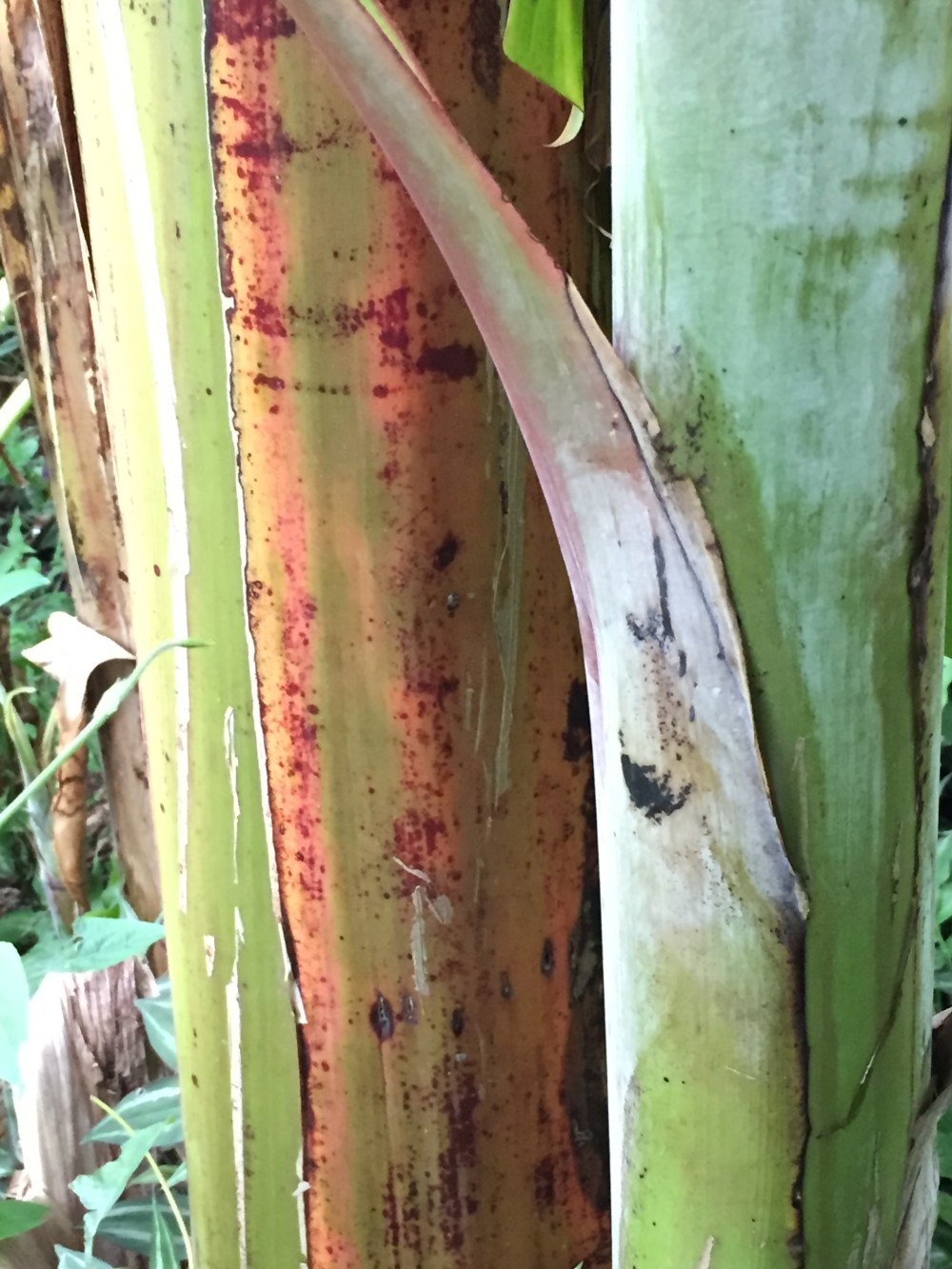
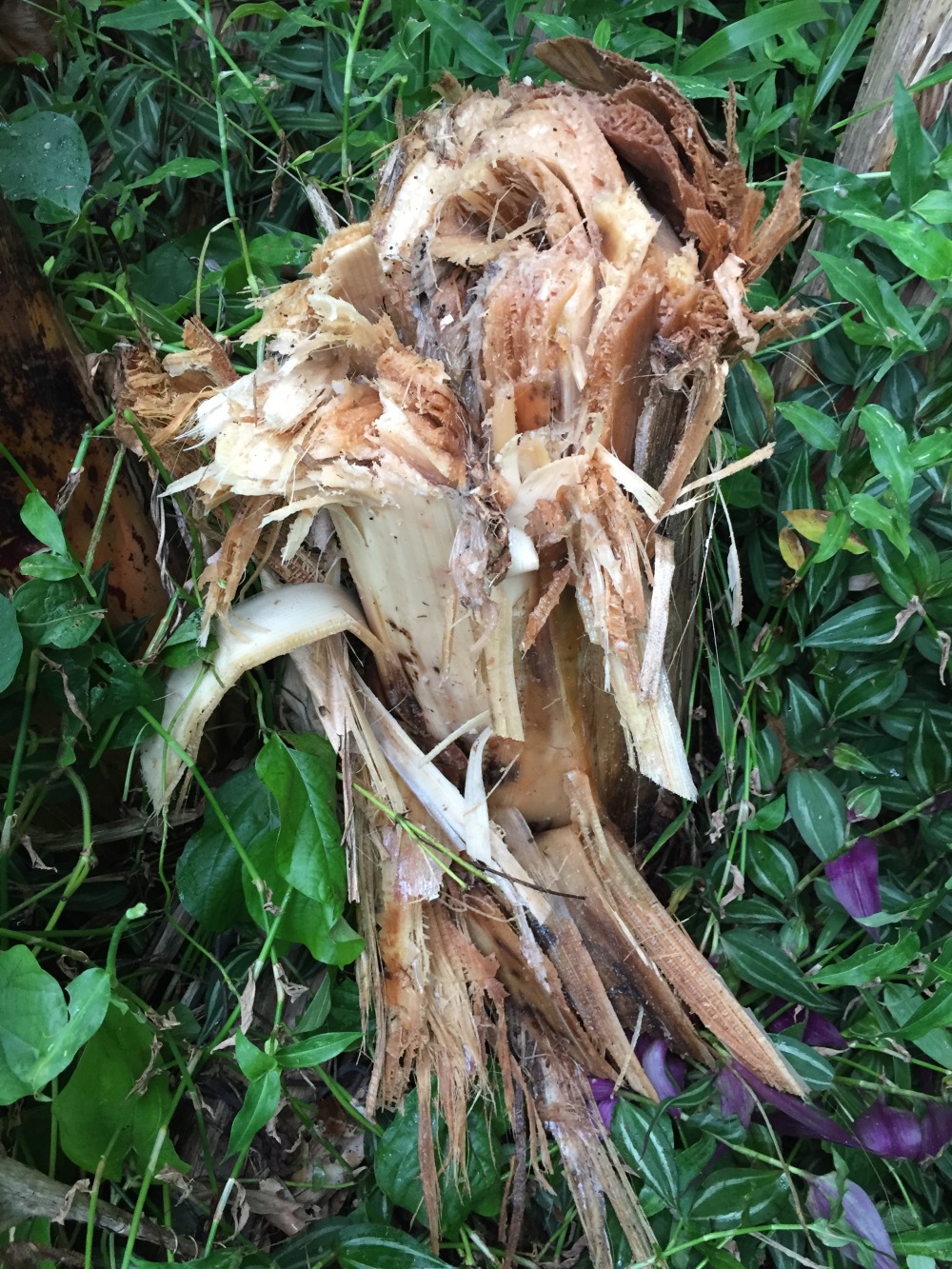

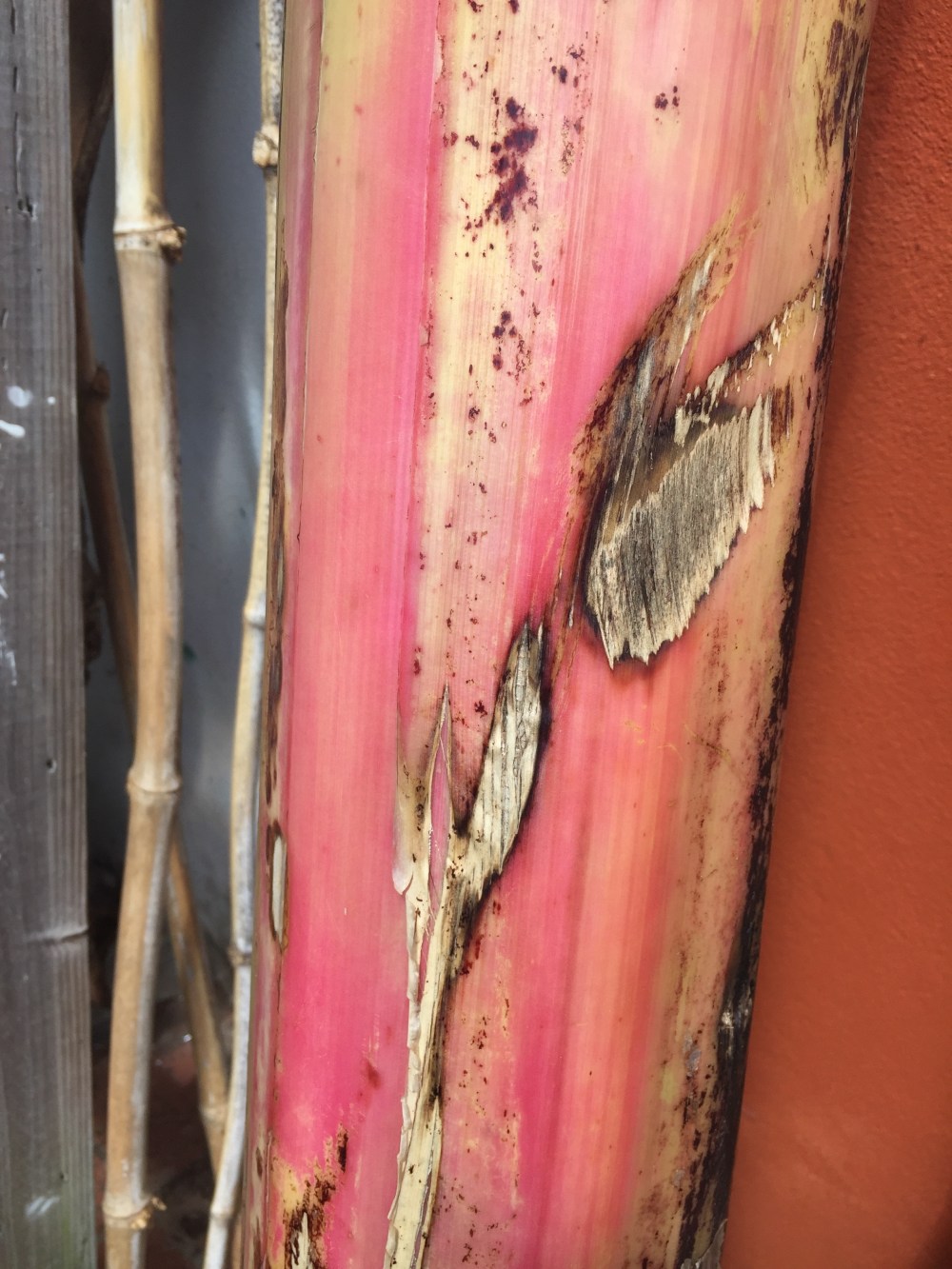

I also included elements of my own visual material memory, things that are commonplace in nature here like the fibre from a coconut tree, sea fans, burlap bags or old ropes found on the beach. All of these things held in suspense by the banana fibre contribute to a physical representation of the way our mind’s organize information but also the way that the digital arena has enabled us to perceive our reality.
Today I installed it at the gallery:



Here is my statement about the piece:
What if we took what we experience from our digital experience and extracted it from the screen? What if the material it was made from was familiar and commonplace? What happens when we experience this physical, organic deconstruction of a digital event, and it makes us remember something – feel something?
Pixels, glitches, and digital artefacts have become as common as any other everyday object in our society. We take for granted that these packets of information mimic (and accommodate) the way our brain compiles information and the way nature organizes life processes. Deconstructing a banana stalk reveals structures that are ordered and efficient. These structures are organic precursors to our motherboards and data storage. These structures are analogies for our memories and bring us full circle in understanding how our understanding of reality is orchestrated by our perception.
The elements of my installation are designed in reference to a gestalt psychology that tries to understand the laws of our ability to acquire and maintain meaningful perceptions in an apparently chaotic world. Our relationship with the digital realm enables us a different set of tools whereby we can look at our commonplace material through this new, organizing filter. “The whole is other than the sum of its parts.”
It is important in my work to reflect a local material culture and to enforce our own consciousness as members of our environment. Just as the material used in this installation are not readily available, especially in the developed world, so too are our own perceptions and experiences unique, valuable, and exceptional.
